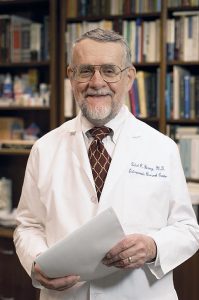Published on June 7, 2017
Dr. Robert Heaney†, former research director for GrassrootsHealth, was interviewed by Dr. Joseph Mercola about the current US RDA for vitamin D. Most vitamin D researchers disagree with the current RDA, citing it is too low, and Heaney does a great job of explaining that position.
 In the beginning of the interview, Heaney mentions that institutions move with glacial slowness. So, we need to act now for our own benefit. The good news is that for a single person or a single medical practice, this is relatively easy. You find out your vitamin D level and adjust your supplements or sun exposure to get within 40-60 ng/ml (100-150 nmol/L). Many doctors, after they have seen a few patients with success using higher doses of vitamin D, learn to use it for their entire practice.
In the beginning of the interview, Heaney mentions that institutions move with glacial slowness. So, we need to act now for our own benefit. The good news is that for a single person or a single medical practice, this is relatively easy. You find out your vitamin D level and adjust your supplements or sun exposure to get within 40-60 ng/ml (100-150 nmol/L). Many doctors, after they have seen a few patients with success using higher doses of vitamin D, learn to use it for their entire practice.
I think moving control out of the hands of an establishment into the hands of the general public carries a long way toward substantial improvement in public health because the official apparatus moves with glacial slowness.
Heaney presented an analogy — thinking about our vitamin D blood level as a bank account. It is important to know how much we have in our account (i.e. your vitamin D level) so that we know what we can draw out (i.e. energy, healing, basic bodily functions) and how much we need to put in to replace it (i.e. the sun, supplementation).
While important, Heaney does not feel that adjustments by individuals are enough. He is passionate for the government to realize and correct their mistake, and not so that we can be right and they can be wrong. He would like the government programs that rely on this RDA to provide the nutrients that are necessary to their constituents. These programs include military meals, Meals on Wheels, feeding the elderly, and the school lunch program.
The goal of an RDA is stated to be the amount needed to meet the nutritional need of 97.5% of the population. The IOM concluded that 20 ng/ml (50 nmol/L) would meet the nutritional needs of people for adequate bone health. According to Heaney, this is a value that cures rickets but falls short of other bone health measures. The GrassrootsHealth research panel considers bone health as just one of the benefits of vitamin D, but also considers health benefits beyond bone and thus recommends 40-60 ng/ml for preventive health.
Heaney does a great job of reviewing the history of the IOM’s conclusions. He explains Paul Veugelers’ paper and how Veugelers showed that the IOM made a mathematical error in determining the RDA. (explained here)
He also explains the GrassrootsHealth analysis of D*action data which led to a different paper that demonstrates the RDA should be 7000 IU/day to get 97.5% of the population above 20 ng/ml – the level set by the IOM as the target for adequacy. (GrassrootsHealth research panel recommends a level between 40 – 60 ng/ml to maintain good health, which would compute to approximately 12000 IU/day.)
More resources about vitamin D RDA
Explanation of Current US RDA for Vitamin D
Read Blog
Robert Heaney’s Blog on this Situation
February 2015
Read Blog
A Statistical Error in the Estimation of the Recommended Dietary Allowance for Vitamin D
Paul J. Veugelers, PhD
John Paul Ekwaru, PhD
Oct. 2014
View Here
Blog about Paper Here
GrassrootsHealth Research Paper
This paper shows that a supplemental dose of 9,122 IU/day, or a vitamin D RDA of approximately 12,000 IU, will ensure that 97.5% of the population will achieve a serum 25(OH)D of at least 40 ng/ml.
View Here
Blog about Paper Here

